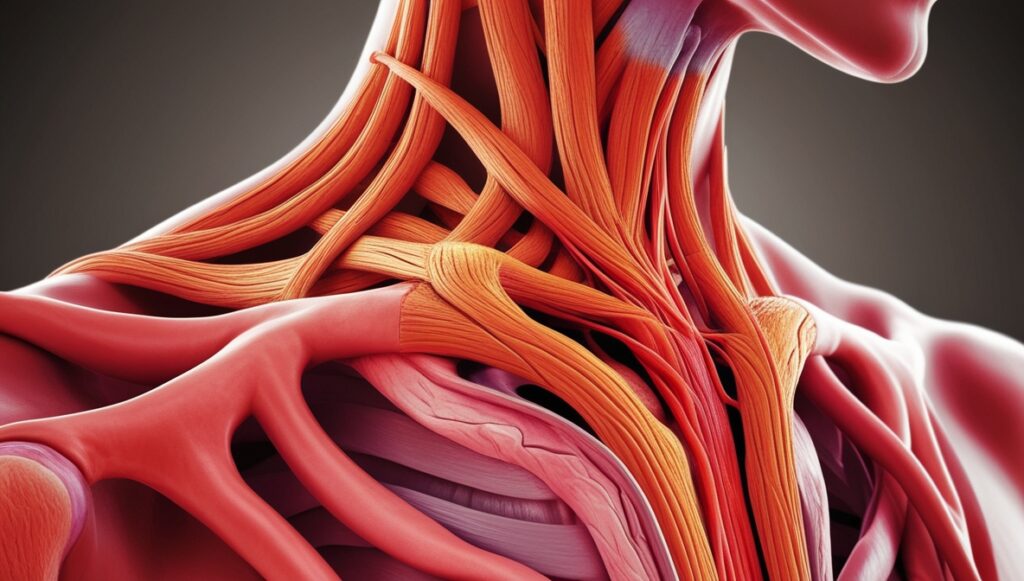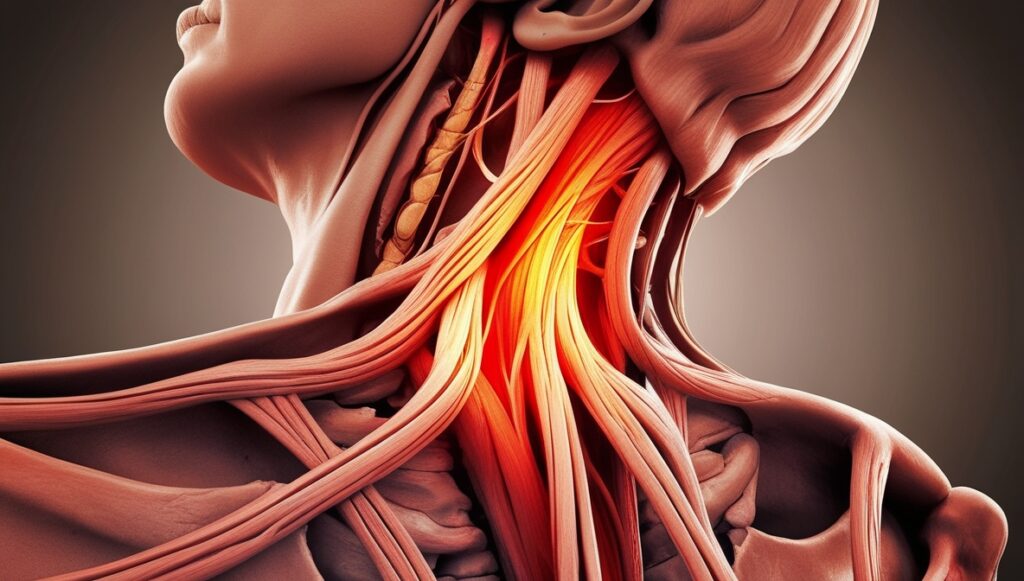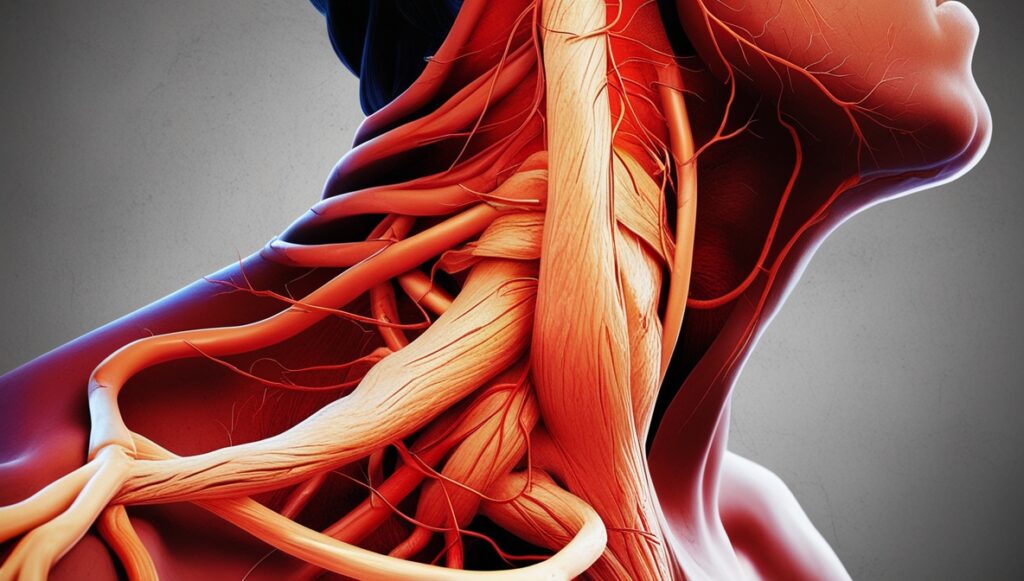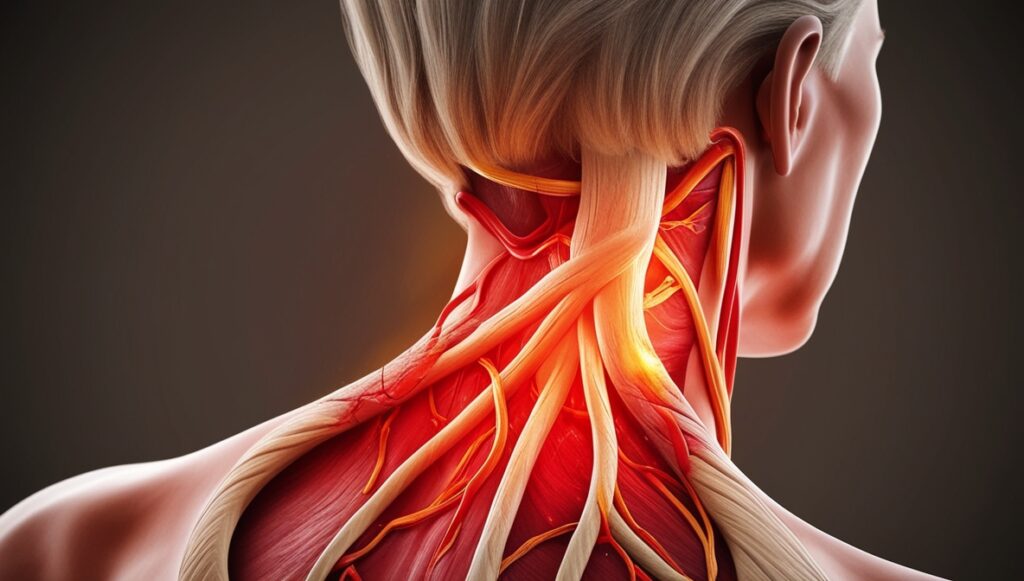Pinched Nerve in Neck Exercises:

Table of Contents
A pinched nerve in the neck, also known as cervical radiculopathy, occurs when a nerve in the neck is compressed or irritated where it branches away from the spinal cord. This condition can cause significant discomfort and interfere with daily activities. Addressing a pinched nerve in the neck is crucial because prolonged compression can lead to more severe nerve damage and complications. In this article, we will explore various exercises and strategies to alleviate the symptoms of a pinched nerve in the neck.
Types and Categories
Cervical Radiculopathy
Cervical radiculopathy is the most common type of pinched nerve in the neck. It involves the compression of nerve roots in the cervical spine, which can result in pain, numbness, and weakness radiating down the arm.
Brachial Plexus Injury
A brachial plexus injury affects the network of nerves that send signals from the spinal cord to the shoulder, arm, and hand. This type of injury can cause a range of symptoms, from mild tingling to severe pain and loss of function.
Thoracic Outlet Syndrome
Thoracic outlet syndrome occurs when the nerves or blood vessels between the collarbone and the first rib are compressed. This can lead to pain in the shoulders and neck, as well as numbness in the fingers.
Symptoms and Signs

Common Symptoms
- Pain: Sharp or burning pain that radiates from the neck down the arm.
- Tingling: A pins-and-needles sensation in the shoulder, arm, or hand.
- Numbness: Loss of sensation in the affected areas.
Uncommon Symptoms
- Weakness: Muscle weakness in the arm or hand.
- Muscle Atrophy: Wasting away of muscles in severe cases due to prolonged nerve compression.
Causes and Risk Factors
Biological Factors
- Herniated Disc: A herniated disc can press against the nerve roots.
- Arthritis: Cervical spondylosis or arthritis can cause bone spurs that compress nerves.
Environmental Factors
- Poor Posture: Prolonged poor posture can lead to nerve compression.
- Repetitive Motion: Activities that involve repetitive neck movements can increase the risk.
Lifestyle Factors
- Sedentary Lifestyle: Lack of physical activity can weaken muscles supporting the neck.
- Obesity: Excess weight can strain the neck and spine.
Diagnosis and Tests
Physical Examination
A doctor will perform a physical exam to check for signs of nerve compression, such as muscle weakness and changes in reflexes.
Imaging Tests
- MRI: Provides detailed images of soft tissues, including nerves and discs.
- CT Scan: Offers cross-sectional images of the spine.
- X-ray: Helps identify bone spurs and alignment issues.
Electromyography (EMG)
EMG measures the electrical activity of muscles and can help determine the extent of nerve damage.
Exercises for a trapped nerve in the neck

A physical therapist can demonstrate the best pinched nerve stretches for your symptoms.
Mild pain, however, may be relieved with gentle exercises. These moves focus on stretching neck muscles and alleviating pressure on the nerve.
To prevent further nerve damage, do these exercises slowly. You can perform them while sitting down or standing up.
Trap stretch
Your trapezius muscles are in the back of your neck. If they’re too tight, they can compress your spine and nerves.
This exercise will loosen these muscles and release trapped nerves.
- Place your right hand under your thigh.
- With your left hand, gently bend your head to the left side.
- Pause for 30 seconds. Repeat 3 times on each side.
Chin tuck
This move reduces tension in the neck muscles by lengthening your neck. It will also improve posture in the head and neck.
- Place your fingers on your chin.
- Gently push your chin toward your neck, until you have a “double chin.”
- Hold for three to five seconds. Relax.
- Repeat three to five times.
Once you’re comfortable with the move, try chin tucks without using your fingers.
Chin tuck with extension
You can add an extra movement to the chin tuck. It will help stretch your neck in a different direction.
For some people, this exercise might cause dizziness. You should avoid it if you have dizziness issues.
- Pull your head back to do a chin tuck.
- Slowly tilt your head up to the ceiling.
- Return to the chin tuck. Relax.
- Repeat two sets of five reps.
Head turn
A pinched nerve can decrease your neck’s range of motion, but head turns may help. Perform this exercise in a slow and controlled manner. If you feel pain, try smaller movements.
- Straighten your head and neck. Look ahead.
- Slowly turn your head to the right. Pause five to 10 seconds.
- Slowly turn to the left. Pause five to 10 seconds.
- You can also tilt your head side to side and up and down.
Neck bend
If you have a pinched nerve in the neck, exercises like neck bends will provide relief. You should also do this stretch slowly.
- Gently move your chin down and toward your chest.
- Pause. Return to starting position.
- Repeat 5 to 10 times.
Shoulder roll
Shoulder rolls release tension in both the shoulders and neck. This can help relieve pressure and pain from a pinched nerve.
- Lift your shoulder blades up, and then roll them back and down.
- Repeat five to six times.
- Repeat in the opposite direction.
Other pinched nerve treatments

In addition to stretches, you can try other treatments for pinched nerves. These methods will decompress nerves, loosen tight muscles, and reduce pain. If you have mild symptoms, you might find relief from:
- rest
- soft cervical collar
- hot or cold compress
- practicing good posture
- nonsteroidal anti-inflammatory drugs (NSAIDs)
- acupuncture
- massage
- yoga
More painful cases need medical attention.
Pinched nerve symptoms
Pinched nerve symptoms may range from mild to severe. It’s also possible to have a pinched nerve without any symptoms.
Common symptoms include:
- pins and needles
- muscle weakness
- burning sensation
- numbness
- pain that radiates outward
- pain when moving your neck or head
- poor neck range of motion
When to see a doctor
Pinched nerves can resolve on their own. This might take days, weeks, or months.
Visit a doctor if your symptoms don’t go away with home treatments. You should also seek medical help if your symptoms are severe or get worse.
A doctor can refer you to a physical therapist. Depending on your symptoms, they might also suggest oral corticosteroids, steroid injections, or surgery.
Takeaway
If you have a pinched nerve in the neck, these exercises can provide relief. They will help decompress the nerve and loosen tight muscles.
Do these stretches gently and carefully. If you feel pain or discomfort, don’t force it. A physical therapist can show you the best moves for your symptoms.
You can also try other pinched nerve treatments like NSAIDs and hot or cold compress.
If your symptoms are severe or don’t go away, seek medical attention.
Managing a pinched nerve in the neck involves a multifaceted approach that includes medical treatment, physical therapy, lifestyle modifications, and preventive measures. By understanding the symptoms, causes, and available treatments, individuals can take proactive steps to alleviate their pain and prevent future occurrences. If you suspect you have a pinched nerve, consult a healthcare professional for an accurate diagnosis and comprehensive treatment plan. Remember, early intervention and consistent effort are key to a successful recovery.
- Also Read :
- Neck Workout at Home: Comprehensive Guide
- Mike Tyson Neck Workout: Building Strength Like a Champ
- Arnold 6 Exercises – Original program and two newer editions
- 6 Exercises for Swollen Feet and Ankles
What is a pinched nerve in the neck?
A pinched nerve in the neck, also known as cervical radiculopathy, occurs when a nerve in the cervical spine is compressed or irritated. This can lead to symptoms such as pain, numbness, tingling, and weakness in the neck, shoulders, arms, and hands.
What are the common symptoms of a pinched nerve in the neck?
Common symptoms include:
Sharp or burning pain in the neck, shoulders, or arms
Tingling or pins-and-needles sensation in the affected area
Numbness in the shoulders, arms, or hands
Muscle weakness in the arm or hand
What causes a pinched nerve in the neck?
Causes can include:
Herniated discs
Bone spurs from arthritis
Poor posture
Repetitive neck movements
Sedentary lifestyle
Obesity
How is a pinched nerve in the neck diagnosed?
Diagnosis typically involves:
Physical examination to assess symptoms and reflexes
Imaging tests such as MRI, CT scan, or X-ray
Electromyography (EMG) to measure electrical activity in muscles




